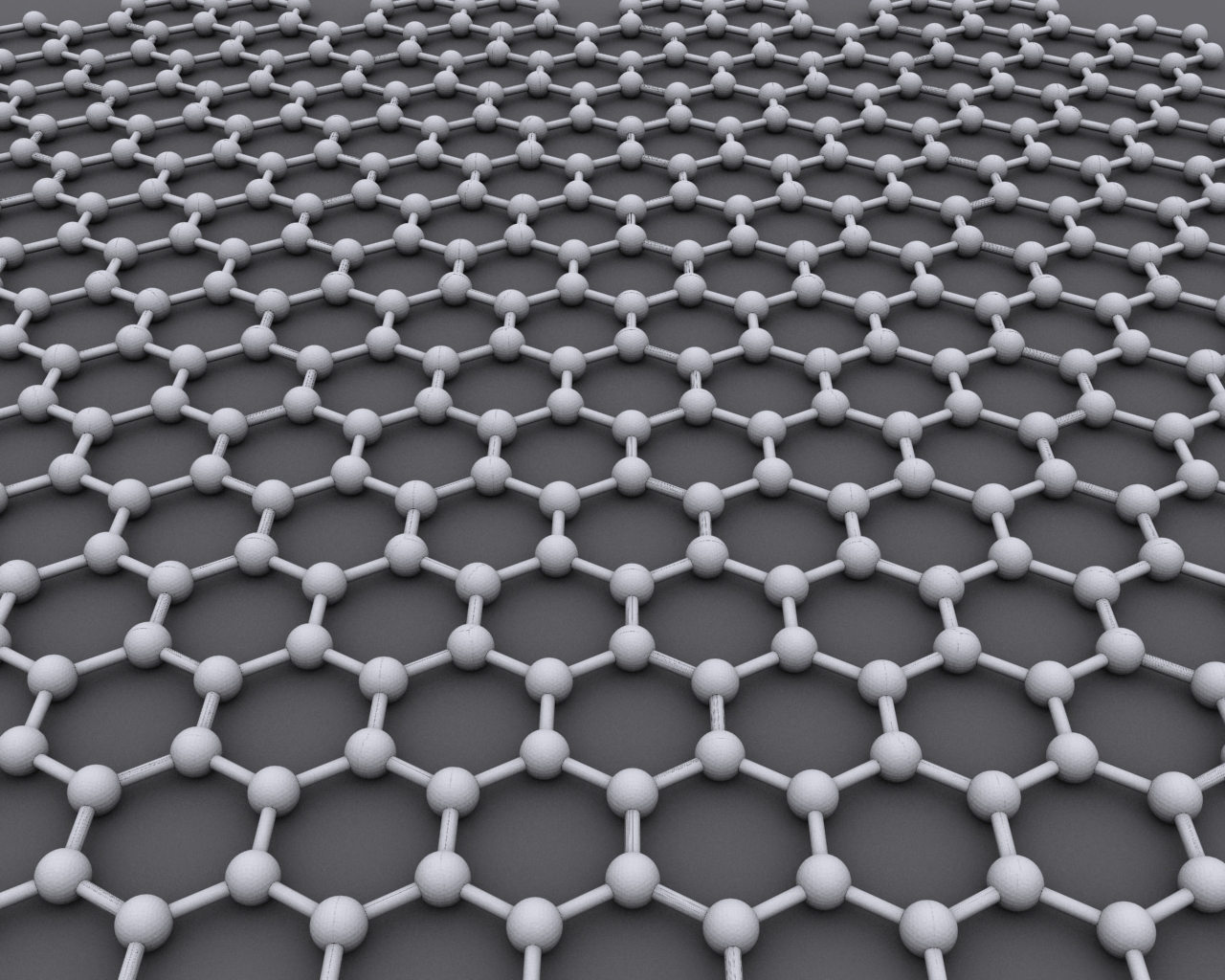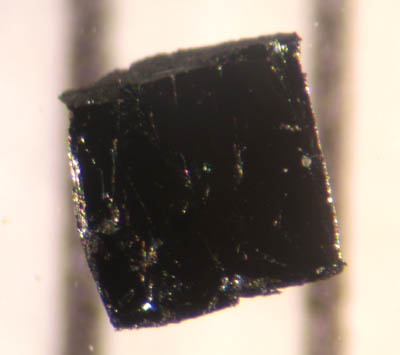|
Graphane
Graphane is a two-dimensional polymer of carbon and hydrogen with the formula unit (CH)n where ''n'' is large. Partial hydrogenation results in hydrogenated graphene, which was reported by Elias et al. in 2009 by a Transmission electron microscopy, TEM study to be "direct evidence for a new graphene-based derivative". The authors viewed the panorama as "a whole range of new two-dimensional crystals with designed electronic and other properties". With the band gap ranges from 0 to 0.8 eV Synthesis Its preparation was reported in 2009. Graphane can be formed by electrolytic hydrogenation of graphene, few-layer graphene or high-oriented pyrolytic graphite. In the last case mechanical exfoliation of hydrogenated top layers can be used. Structure The first theoretical description of graphane was reported in 2003. The structure was found, using a cluster expansion method, to be the most stable of all the possible hydrogenation ratios of graphene. In 2007, researchers found that the com ... [...More Info...] [...Related Items...] OR: [Wikipedia] [Google] [Baidu] |
Two-dimensional Nanomaterials
In materials science, the term single-layer materials or 2D materials refers to crystalline solids consisting of a single layer of atoms. These materials are promising for some applications but remain the focus of research. Single-layer materials derived from single elements generally carry the -ene suffix in their names, e.g. graphene. Single-layer materials that are compounds of two or more elements have -ane or -ide suffixes. 2D materials can generally be categorized as either 2D allotropes of various elements or as compounds (consisting of two or more covalently bonding elements). It is predicted that there are hundreds of stable single-layer materials. The atomic structure and calculated basic properties of these and many other potentially synthesisable single-layer materials, can be found in computational databases. 2D materials can be produced using mainly two approaches: top-down exfoliation and bottom-up synthesis. The exfoliation methods include sonication, mechanical, hy ... [...More Info...] [...Related Items...] OR: [Wikipedia] [Google] [Baidu] |
High-temperature Superconductor
High-temperature superconductivity (high-c or HTS) is superconductivity in materials with a critical temperature (the temperature below which the material behaves as a superconductor) above , the boiling point of liquid nitrogen. They are "high-temperature" only relative to previously known superconductors, which function only closer to absolute zero. The first high-temperature superconductor was discovered in 1986 by IBM researchers Georg Bednorz and K. Alex Müller. Although the critical temperature is around , this material was modified by Ching-Wu Chu to make the first high-temperature superconductor with critical temperature . Bednorz and Müller were awarded the Nobel Prize in Physics in 1987 "for their important break-through in the discovery of superconductivity in ceramic materials". Most high-c materials are type-II superconductors. The major advantage of high-temperature superconductors is that they can be cooled using liquid nitrogen, in contrast to previously kno ... [...More Info...] [...Related Items...] OR: [Wikipedia] [Google] [Baidu] |
Physics World
''Physics World'' is the membership magazine of the Institute of Physics, one of the largest physical societies in the world. It is an international monthly magazine covering all areas of physics, pure and applied, and is aimed at physicists in research, industry, physics outreach, and education worldwide. Overview The magazine was launched in 1988 by IOP Publishing Ltd, under the founding editorship of Philip Campbell. The magazine is made available free of cost to members of the Institute of Physics, who can access a digital edition of the magazine; selected articles can be read by anyone for free online. It was redesigned in September 2005 and has an audited circulation of just under 35000. The current editor is Matin Durrani. Others on the team are Michael Banks (news editor) and Tushna Commissariat and Sarah Teah (features editors). Hamish Johnston, Margaret Harris and Tami Freeman are online editors. Alongside the print and online magazine, Physics World produces film ... [...More Info...] [...Related Items...] OR: [Wikipedia] [Google] [Baidu] |
Polymer
A polymer () is a chemical substance, substance or material that consists of very large molecules, or macromolecules, that are constituted by many repeat unit, repeating subunits derived from one or more species of monomers. Due to their broad spectrum of properties, both synthetic and natural polymers play essential and ubiquitous roles in everyday life. Polymers range from familiar synthetic plastics such as polystyrene to natural biopolymers such as DNA and proteins that are fundamental to biological structure and function. Polymers, both natural and synthetic, are created via polymerization of many small molecules, known as monomers. Their consequently large molecular mass, relative to small molecule compound (chemistry), compounds, produces unique physical property, physical properties including toughness, high rubber elasticity, elasticity, viscoelasticity, and a tendency to form Amorphous solid, amorphous and crystallization of polymers, semicrystalline structures rath ... [...More Info...] [...Related Items...] OR: [Wikipedia] [Google] [Baidu] |
Polymers
A polymer () is a substance or material that consists of very large molecules, or macromolecules, that are constituted by many repeating subunits derived from one or more species of monomers. Due to their broad spectrum of properties, both synthetic and natural polymers play essential and ubiquitous roles in everyday life. Polymers range from familiar synthetic plastics such as polystyrene to natural biopolymers such as DNA and proteins that are fundamental to biological structure and function. Polymers, both natural and synthetic, are created via polymerization of many small molecules, known as monomers. Their consequently large molecular mass, relative to small molecule compounds, produces unique physical properties including toughness, high elasticity, viscoelasticity, and a tendency to form amorphous and semicrystalline structures rather than crystals. Polymers are studied in the fields of polymer science (which includes polymer chemistry and polymer p ... [...More Info...] [...Related Items...] OR: [Wikipedia] [Google] [Baidu] |
Lattice Constant
A lattice constant or lattice parameter is one of the physical dimensions and angles that determine the geometry of the unit cells in a crystal lattice, and is proportional to the distance between atoms in the crystal. A simple cubic crystal has only one lattice constant, the distance between atoms, but, in general, lattices in three dimensions have six lattice constants: the lengths ''a'', ''b'', and ''c'' of the three cell edges meeting at a vertex, and the angles ''α'', ''β'', and ''γ'' between those edges. The crystal lattice parameters ''a'', ''b'', and ''c'' have the dimension of length. The three numbers represent the size of the unit cell, that is, the distance from a given atom to an identical atom in the same position and orientation in a neighboring cell (except for very simple crystal structures, this will not necessarily be distance to the nearest neighbor). Their SI unit is the meter, and they are traditionally specified in angstroms (Å); an angstrom being 0.1 ... [...More Info...] [...Related Items...] OR: [Wikipedia] [Google] [Baidu] |
Journal Of Physical Chemistry C
''The Journal of Physical Chemistry C'' publishes scientific articles reporting research on several subdisciplines of physical chemistry: *Nanoparticles and nanostructures *surfaces, interfaces, and catalysis *Electron transport, optical and electronic devices *Energy conversion and storage It was created in 2007 when '' The Journal of Physical Chemistry B'' was split in two, largely due to the recent growth in the area of nanotechnology. The journal is published weekly, with the first issue on January 11, 2007. Like ''The Journal of Physical Chemistry A'' and '' B'', it is published by the American Chemical Society. The journal is indexed in: Chemical Abstracts Service (CAS) and British Library. According to the ''Journal Citation Reports'', the journal had a 2022 impact factor of 3.7. Editor-in-Chief *2007–2019 George C. Schatz *2020–present Joan-Emma Shea See also * ''The Journal of Physical Chemistry A'' * '' The Journal of Physical Chemistry B'' * ''The Journal ... [...More Info...] [...Related Items...] OR: [Wikipedia] [Google] [Baidu] |
Physical Review Letters
''Physical Review Letters'' (''PRL''), established in 1958, is a peer-reviewed, scientific journal that is published 52 times per year by the American Physical Society. The journal is considered one of the most prestigious in the field of physics. Over a quarter of Physics Nobel Prize-winning papers between 1995 and 2017 were published in it. ''PRL'' is published both online and as a print journal. Its focus is on short articles ("letters") intended for quick publication. The Lead Editor is Hugues Chaté. The Managing Editor is Robert Garisto. History The journal was created in 1958. Samuel Goudsmit, who was then the editor of '' Physical Review'', the American Physical Society's flagship journal, organized and published ''Letters to the Editor of Physical Review'' into a new standalone journal'','' which became ''Physical Review Letters''. It was the first journal intended for the rapid publication of short articles, a format that eventually became popular in many other fiel ... [...More Info...] [...Related Items...] OR: [Wikipedia] [Google] [Baidu] |
Kelvin
The kelvin (symbol: K) is the base unit for temperature in the International System of Units (SI). The Kelvin scale is an absolute temperature scale that starts at the lowest possible temperature (absolute zero), taken to be 0 K. By definition, the Celsius scale (symbol °C) and the Kelvin scale have the exact same magnitude; that is, a rise of 1 K is equal to a rise of 1 °C and vice versa, and any temperature in degrees Celsius can be converted to kelvin by adding 273.15. The 19th century British scientist Lord Kelvin first developed and proposed the scale. It was often called the "absolute Celsius" scale in the early 20th century. The kelvin was formally added to the International System of Units in 1954, defining 273.16 K to be the triple point of water. The Celsius, Fahrenheit, and Rankine scales were redefined in terms of the Kelvin scale using this definition. The 2019 revision of the SI now defines the kelvin in terms of energy by setting the Bo ... [...More Info...] [...Related Items...] OR: [Wikipedia] [Google] [Baidu] |
BCS Theory
In physics, the Bardeen–Cooper–Schrieffer (BCS) theory (named after John Bardeen, Leon Cooper, and John Robert Schrieffer) is the first microscopic theory of superconductivity since Heike Kamerlingh Onnes's 1911 discovery. The theory describes superconductivity as a microscopic effect caused by a condensation of Cooper pairs. The theory is also used in nuclear physics to describe the pairing interaction between nucleons in an atomic nucleus. It was proposed by Bardeen, Cooper, and Schrieffer in 1957; they received the Nobel Prize in Physics for this theory in 1972. History Rapid progress in the understanding of superconductivity gained momentum in the mid-1950s. It began with the 1948 paper, "On the Problem of the Molecular Theory of Superconductivity", where Fritz London proposed that the phenomenological London equations may be consequences of the coherence of a quantum state. In 1953, Brian Pippard, motivated by penetration experiments, proposed that this would mo ... [...More Info...] [...Related Items...] OR: [Wikipedia] [Google] [Baidu] |
Journal Of Applied Physics
The ''Journal of Applied Physics'' is a peer-reviewed scientific journal with a focus on the physics of modern technology. The journal was originally established in 1931 under the name of ''Physics'', and was published by the American Physical Society for its first 7 volumes. In January 1937, ownership was transferred to the American Institute of Physics "in line with the efforts of the American Physical Society to enhance the standing of physics as a profession". The journal's current editor-in-chief is André Anders ( Leibniz Institute of Surface Engineering). According to the ''Journal Citation Reports ''Journal Citation Reports'' (''JCR'') is an annual publication by Clarivate. It has been integrated with the Web of Science and is accessed from the Web of Science Core Collection. It provides information about academic journals in the natur ...'', the journal has a 2023 impact factor of 2.7. References External links * Physics journals Weekly journals Academ ... [...More Info...] [...Related Items...] OR: [Wikipedia] [Google] [Baidu] |






